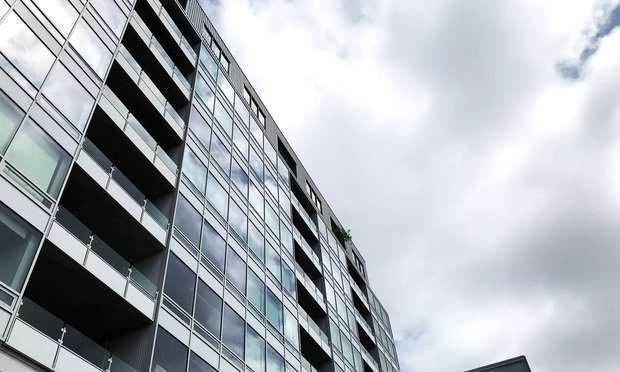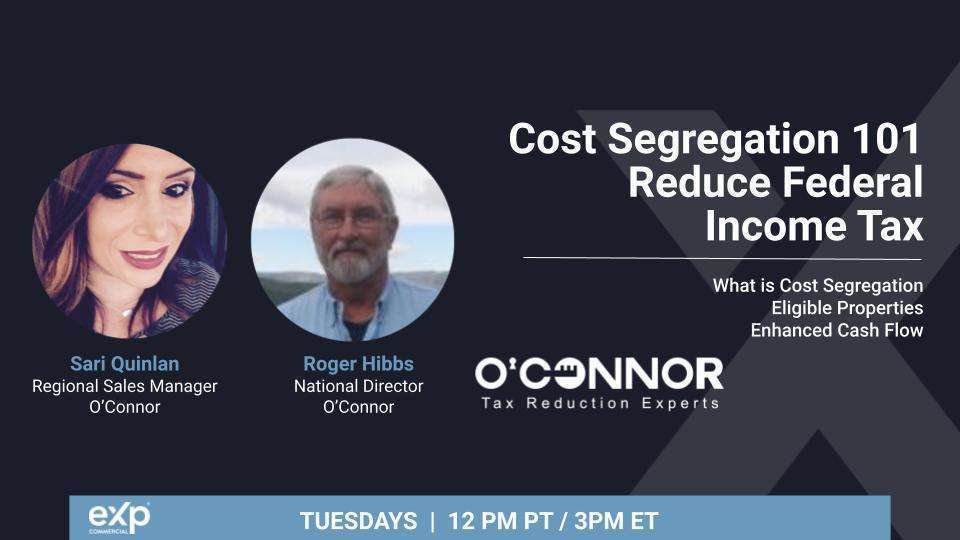
Any game is hard to win if you don’t know the rules. Being a landlord is no different. Oftentimes, juggling tenant needs, paying insurance premiums and mortgages on time, and squaring up at tax season can feel like a chess game where the pieces keep changing.
While the objective is a successful rental business, that’s not always possible. Given that 36% of rental businesses fail in the first five years according to AdvisorSmith, it’s crucial to do everything you can to maximize profits and come out triumphant.
One way to keep more of what you earn is to minimize expenses. Most landlords already understand the cost-saving importance of knowing how to set the right rental rate and reducing the risk of evictions with thorough renter background checks through a high-quality service like SmartMove.
However, fewer landlords are aware of the range of tax breaks available to property owners and managers—opportunities that could help you save big. With many renters and landlords recovering after a financially tumultuous few years, it's more important than ever to help protect your investment.
Below, you’ll find 15 deductions that could help you during tax season. While some of these tax breaks apply to all homeowners, many are unique to rental property. Make sure to check with your tax professional or CPA to determine whether any specific tax deduction applies to you and make the most out of your return.
As you work on this year’s tax returns, keep the following deductions in mind:
1. LONG-DISTANCE TRAVEL
If you have to travel long distances to check on your property, Moolanomy reports you can deduct the cost of your travel expenses. Examples of deductible expenses include car mileage, airfare, or hotel costs.
2. MORTGAGE INTEREST
If you didn’t purchase your rental property outright, you probably have a mortgage. If you do, you’re paying interest to a bank. According to SmartAsset, landlords can deduct their mortgage interest as a rental expense.
This well-known rental property tax deduction applies to all homeowners. Still, it’s especially important for landlords to use because it’s usually the biggest deduction they can claim.
3. PERSONAL PROPERTY TAXES
You may be required by your local government to pay personal property taxes on equipment and furniture used for business purposes, based on the value of the property. Most landlords are aware that they can depreciate their personal property, but did you know that you can depreciate personal items used in and for your rental business at a faster rate
All Property Management explains that with the Modified Accelerated Cost Recovery System, you may save more money by fully depreciating personal property inside the rental unit over a shorter period. For example, appliances, carpeting, and furniture can be depreciated over a five-year period. Other items, like fences and driveways, can be depreciated at a 15-year rate. You can check to see which asset class your property falls into on the IRS website.
4. REPAIRS
The IRS splits repairs into two types:
- Improvements to the property (which increase the value) or
- Returning things to their original condition (maintenance)
Bigger Pockets notes that while improvements must be capitalized and deductions taken as depreciation over time, repairs and maintenance costs can be expensed in a single year.
Nolo.com offers the helpful BAR acronym to help you decide if your repairs are simply maintaining the property or could be considered improvements:
- Betterment. Does the change fix a defect in the property that existed before you bought it Does it physically enlarge or enhance the property in any way?
- Adaptation. Are you going to use the property in a new or different way than you originally intended when you purchased the property?
- Does the change rebuild the property to a like-new condition Have you already taken a loss for the damage
If you can answer yes to the above questions or your repair falls into any of these categories, it would likely be considered an improvement by the IRS, which needs to be depreciated.
5. LOCAL TRAVEL
Many landlords like to routinely check in on their tenants and property. You might also need to handle maintenance, repairs, or improvements on-site. If you use your personal vehicle to make the trip, you can deduct the cost of travel using one of two different methods:
- Actual expenses or
- IRS standard mileage rate.
FindLaw.com says there’s a caveat if you’re using the IRS standard method. In order to qualify, a landlord must use this method during the first year that the vehicle was used in rental business activity. The actual expense method allows you to deduct the actual vehicle expenses, as well as depreciation.
According to the IRS, the local travel deduction can include gas, oil, lease payments, licenses and fees, repairs, tolls, and parking. Calculate your deduction both ways to see which method benefits you most.
6. LEGAL FEES FOR AN EVICTION
Often a landlord's worst nightmare, eviction proceedings are extremely stressful and can bankrupt small rental businesses. If the worst happens and you’re forced to evict or take legal action against a tenant, Sapling says you can deduct court fees and attorney costs.
However, even if some of those expenses can be deducted, such a financial hit could decimate your profits. SmartMove estimated that total eviction-related expenses averaged $3,500. How would your business fair with such hefty fees
In addition to monetary cost, there is also the intense worry of an ongoing legal battle and the pressure of not knowing what could come next. While it’s good to save money by claiming landlord tax deductions, it’s better to prevent evictions in the first place by thoroughly and consistently screening your tenants before they're allowed to move in.
Bolster your tenant screening process with detailed, near-instant background checks that include criminal checks, renter credit reports, and eviction history with SmartMove. Getting an in-depth look at a rental applicant’s background and track record can help you make more informed, timely screening decisions.
7. HOME OFFICE
If you use a dedicated space in your home to conduct rental business, it is a deductible expense–even if it’s not a whole room. HomeGuides points out that a deductible space must be an area used exclusively for rental activity, and used as a primary meeting place for clients and customers.
Money Crashers also reminds you that any equipment must also be used exclusively for business. For instance, your work computer shouldn’t be used to play games or for other personal reasons.
There are several ways you can calculate the business portion of your house as an expense in order to find the largest deduction. According to Money Crashers, you can:
- Calculate your space’s square footage divided by the square footage of your entire house if all the rooms in your house are roughly the same size, divide the number of rooms your business space encompassed by the total number of rooms in the house
- Use a prescribed rate multiplied by the allowable square footage used in the home. For 2021, the prescribed rate is $5 per square foot with a maximum of 300 square feet.
Note that you can deduct a portion of your home repairs if they partially affect your office and the full price of the repair if it only affects your office. However, you cannot use these deductions if you have an outside office as well, or if you’re renting the space to your employer.
8. WAGES FOR EMPLOYEES AND INDEPENDENT CONTRACTORS
If you hire a property manager or grounds maintenance worker, you can deduct their wages as a rental business expense. This also holds true for independent contractors like carpenters or electricians.
According to Nolo, one of the benefits of hiring independent contractors is that you don’t have to withhold federal taxes out of their paycheck or pay one-half of the worker’s Social Security and Medicare taxes. However, you do need to file IRS Form 1099-MISC if you pay them over $600 during the year.
And don’t forget employee meal and entertainment expenses. Turbo Tax reminds landlords that events like holiday parties or summer outings for your staff are 100% deductible. If you incur an expense while doing business with a potential client or business associate, you can deduct 50% of the total.
9. CASUALTY LOSSES
If anything happens to your property due to an unexpected event like a natural disaster or fire, you can claim a total or partial property loss on your tax return. However, as Nolo points out, you can only claim losses to the extent that they aren’t covered by insurance.
If you do have insurance, you must reduce the amount of your claimed casualty loss by any insurance recovery you receive (or expect to receive, if you haven’t been paid yet). Losses that are fully covered by insurance are not deductible.
10. DEPRECIATION
Depreciation is a deduction you can take for property and items that you own for over one year. The cost of qualifying items are deducted in small amounts over a set number of years. For example, rental buildings are depreciated over 27.5 years. This means that you can deduct about 1/27 of your rental property annually.
SF Gate points out that depreciation is actually required by the IRS. Depreciation claims don’t just save you money, but they might also keep you out of legal hot water. Also, if you sell the property for more than the depreciated value, the IRS may charge you a 25% recapture tax, whether or not you actually claimed depreciation. It makes more sense to claim the depreciation than to eventually pay taxes on a benefit you never received.
11. INSURANCE
According to Steadily, the on your rental are deductible. This includes fire, theft, and flood insurance for your rental property, plus landlord liability insurance. If you have employees, you can also deduct the cost of their health and workers' compensation insurance.
12. CAPITAL EXPENSES
Nolo offers some helpful information for understanding how landlords can deduct long-term assets, but we’ll go over the basics here. In terms of tax rules, there are two different types of expenses that are incurred as a rental property business: current and capital.
- Capital expenses are defined as purchases that are expected to last more than one year and generate revenue in the future. This might include equipment, land, or vehicles, but keep in mind these are not the only capital expenses. Such purchases are treated as investments by the IRS and must be deducted (or capitalized) over a number of years.
- Current expenses are the day-to-day operational expenses that keep your business running, such as rent and utilities. You can deduct 100% of current expenses from your gross rental income in the year they are incurred.
13. PROFESSIONAL SERVICES
In addition to the legal services mentioned above, other professional assistance can be deducted, as well. Consulting a tax professional is not only advisable but also a deductible expense. According to Forbes, attorneys and accountants can be deducted from your taxes, as long as the reason you are hiring them is related to your rental business.
Since IRS regulations are regularly updated or changed, hiring an accountant to file your taxes can keep you from overlooking any deductions available to you. If you do decide to handle your taxes yourself, the same deduction is applicable if you use tax preparation software.
14. OPERATING EXPENSES
Many items that you purchase for your rental property throughout the year can be classified as operating expenses and deducted in the year during which you purchase them. The IRS website defines these expenses as “the ordinary and necessary expenses for managing, conserving and maintaining your rental property”. Appropriate expenses that are generally accepted as necessary for a rental business might include:
- Advertising
- Maintenance
- Utilities
- Insurance
15. MAINTENANCE
You might be tempted to put maintenance in the repairs category, but the ongoing upkeep of your property doesn’t necessitate something being broken. For example, landscaping and pool cleaning is done on a regular basis, even when there are no major issues.
You can also deduct any tools needed for cleaning or upkeep, such as lawnmowers, weed eaters, or paint sprayers. In some cases, it may be necessary to depreciate these tools, so check with a tax professional if you have any doubts. The same holds true for cleaning supplies and janitorial items. According to HOA Sites, you can even deduct Homeowner Association fees as a rental expense.




